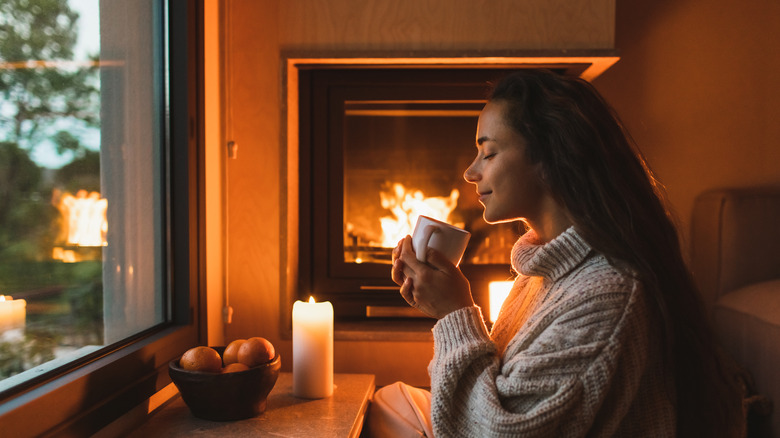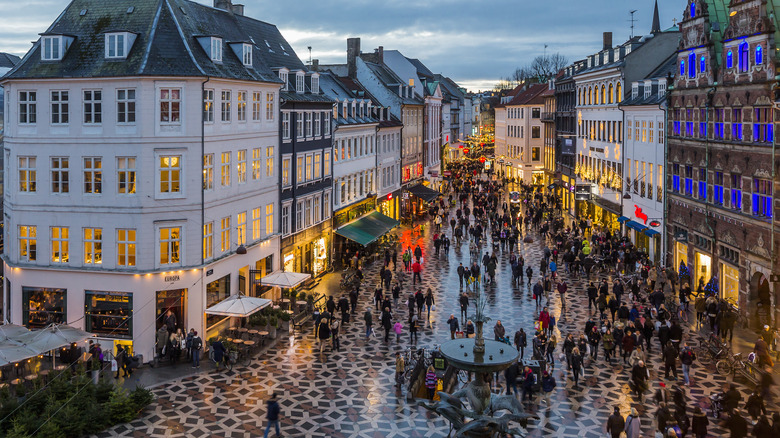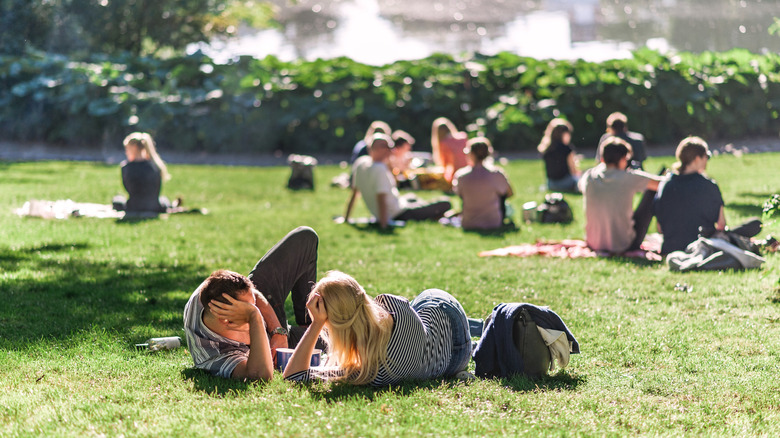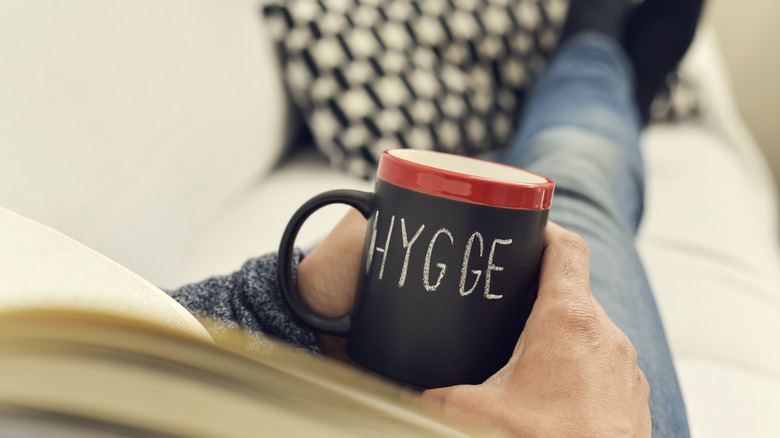Visit Denmark To Truly Understand Hygge And How To Bring It With You On Future Travels
We may receive a commission on purchases made from links.
You may have heard it said that the people of Denmark are among the happiest in the world. While they placed second behind Finland in The World Happiness Report for 2024, they've been consistently in the top three. Denmark is also one of the safest countries for travelers, and it's home to travel pro Rick Steves' favorite European island, Ærø. Denmark is a wonderful place to visit and explore, and part of the reason is the Danish concept of "hygge" (which is pronounced hoo-gah). It's hard to translate exactly, but it's the idea of being cozy, comforted, and spending time with family and friends. Think warm sweaters, hot cocoa, board games with loved ones, and candlelight. We recently spoke with Dr. Janina Scarlet, psychologist and author of "Unseen, Unheard, Undervalued: Managing Loneliness, Loss of Connection, and Not Fitting In," about the Danish concept of hygge, and how we can bring it into our lives and our future travels, whether that's to Denmark or anywhere else.
Dr. Scarlet, who has given Islands.com readers advice on how to completely unplug during vacation, talked about the psychological benefits of practicing hygge. She says, "As a mental health professional, I'm always looking for ways to support my clients in practicing mindfulness and stress coping skills." She tells us how we can add hygge to our own skills.
Dr. Scarlet on the Danish concept of hygge
Dr. Scarlet explains that when she began learning about Danish culture, she wanted to understand why the country was rated so highly in terms of happiness. She says, "I came across this concept of hygge and read this amazing book by a Danish researcher, Meik Wiking, who talks about hygge. I highly recommend this book, "The Little Book of Hygge" and it's something I now recommend for my clients as a practice, when they're at home, at work, or traveling."
As to why this became popular in Denmark, she says, "I'm not a Danish person, but in my understanding, I think because the weather in Denmark can be sometimes challenging in terms of — there's a lot of rain and colder days. Danish individuals created this beautiful practice of enjoying their days and their lives, no matter the weather. In fact, I believe there is a saying that 'There's no bad weather, only bad clothing.' So, this practice comes from creating a cozy and loving environment regardless of the weather outside. And it's a practice of making either your home cozy, or your environment at work, or travel cozy, so that no matter what, you're having a good day."
Dr. Scarlet says that one way we can figure out what hygge means for us is to look to our senses. She explains, "[One of] the biggest factors about it appear to be light and sound, although any kind of sensory property can be helpful too." She mentions comforting beverages, candles or LED lights, rather than harsh overhead lighting. "So having more quiet in our space ... seem[s] to be really important, as well as very comfortable chairs, whether it's at work or at home [or] blankets that we like that. We can even bring with us when we're traveling."
How to practice hygge in Denmark
Dr. Scarlet says that, in the West "we've created this culture where, if we're not being productive, then we are either 'lazy or wasting time.' I don't actually believe 'lazy' exists as a mental health professional. I think that either we are in need of rest, or we are going through something challenging, or are not motivated or maybe are not on the path that we're meant for." She says the people of Denmark "really focus on creating a lovely work-life balance, where we're not working more than a work day, we're home at a reasonable time, and then being in a cozy environment at work and at home, and spending time with our loved ones, whether it's with our friends or family members, or by ourselves or with our pets ... is what's responsible for Denmark being the happiest country in the world."
Since part of Danish hygge practice is spending time with loved ones, how does that help us as outsiders traveling to Denmark? Dr. Scarlet says, "If we're traveling by ourselves for a short period of time, we might be able to find some kind of a meetup group, or a tour group, or class where we can meet other people. And alternatively, we can find other people that are new to Denmark as well and spend some time with them. I think that whether we're traveling to Denmark, or really any other country, spending some time with locals and finding out how locals like to cozy up, and what kind of foods bring them comfort, and what kind of movies or traditions or practices bring them comfort, can actually allow us to further connect with individuals from that country and discover those practices for ourselves."
Traveling with the concept of hygge
Dr. Scarlet has another suggestion for bringing hygge into our travels, whether to Denmark or elsewhere. She says, "It's a concept we can create anywhere, and we can even create a hygge emergency kit ... maybe a hygge bag or hygge box that we can reach into and pull out a coloring book, or something that makes us feel cozier in the moment." She suggests adding a cotton ball saturated in our favorite essential oil in a Ziploc bag (which is always good to have in your carry-on), " ... so we can smell it whenever we need that sense of home, or whenever we want to be reminded of something calming." She mentions a favorite book, certain sunglasses if we're light sensitive, and comforting snack foods. "It could be anything that can allow our senses to feel a bit more at ease." Dr. Scarlet says she brings her favorite blanket when traveling, and suggested electronic candle lights from home if you're staying in a hotel with harsh lighting.
When we're rushing to a plane or trying to get to our gates in a panic, Dr. Scarlet says we can use hygge to help calm down, explaining that we should try to go half a beat slower. She says, "Imagine driving when you're late. Your body's leaning forward and you're gripping the wheel ... you're probably clenching your jaw, but you're not actually getting to where you're going any faster ... if we go just half a bit slower, if we take a breath, unwind our body, then not only do we feel better, but ... [it] might be easier to meet our needs to get more tasks done, but also even more importantly to slow down and give ourselves the energy that we need to recharge."



